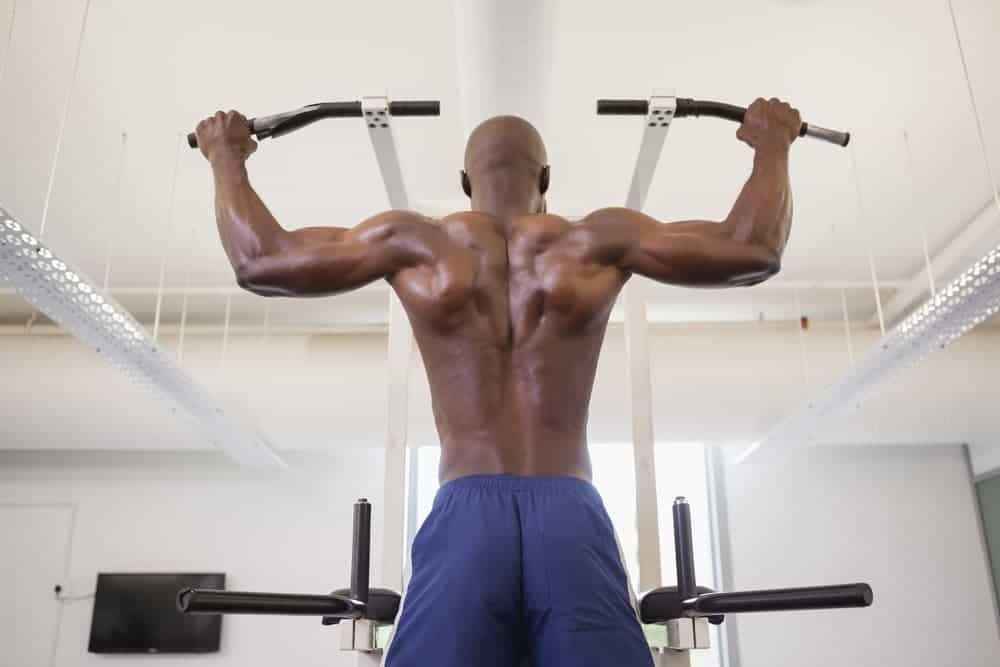Having a chin or pull-up bar at home has so many benefits. Aside from getting access to a wide variety of muscle-building exercises, you get to work out any time, too.
It does not take up much floor space either, and you can even add weights for a more challenging fitness routine. But the thing is, not every bar is the same.
And so, before buying and setting one up for your home gym, it’s crucial that you know your options and what makes each different.
There are several factors to consider when choosing a chin-up bar, as listed in our buying guide. But while material and weight limits are essential, the best home pull-up bar would have to fit your space and fitness goals.
Here’s my review of the different types of pull-up bars to help you find your ideal match.
Wall-Mounted Bar for Diverse Workouts
PROS: stable installation, high weight limit, suits an intense workout
CONS: may require permission to install, is laborious to mount, and needs a strong wall
If you’re an advanced user or gym-goer who prefers a robust and secure piece of equipment, then a wall pull-up bar at home is for you.
This type typically has a higher weight limit than a doorway chin-up bar.
You can set it up based on your height preference and choose a unit with a parallel bar option for more movement variety.
The best part is it doesn’t take up much room. Once you install it in the right location, you can exercise any time without you or the bar getting in the way.
However, as a wall-mounted bar requires drilling, installation can be challenging and time-consuming. This option will not work on soft plaster walls either.
And if you live in a rented home or apartment, a permanent fixture like this may need permission first. Some landlords may not even allow it.

Doorway Pull-Up Bar for Occasional Workouts
PROS: space and budget-friendly, easy to install, portable, no drilling required
CONS: not very stable, may damage door frames, limited height and weight capacity
This pull-up bar at home is best if you are a beginner with limited gym space. It’s also the perfect choice for users on a budget or those looking for more practical options.
There are also two kinds of door chin-up bars. The telescopic kind is by far the easiest to install and clamps on any door jamb width. The other is the hanging type that you can position on the door frame using its built-in lever.
Both types are easy to remove after your workout and need no drilling to install. However, these advantages also limit the stability of both bar types.
Although some models have add-ons for safety, these are not the best choice for heavy or tall users.
Vigorous exercise routines are not possible either due to the risk of the bars suddenly detaching from their anchorage.
Over time, frequent use may lead to damaged door frames, especially wooden ones. Also, not all doors are compatible with hanging at-home pull-up bars.
Ceiling Pull-Up Bar for Challenging Workouts
PROS: supports complex and varied exercises, allows more movement freedom, multipurpose
CONS: difficult to mount, not portable, may not suit some homes or users
Similar to a wall-mounted pull-up bar at home, the joist or ceiling type can withstand more weight and force when properly installed.
The main difference is that ceiling-mounted bars provide more room for your body to move and swing. Taller people won’t have to bend their knees while working out either.
It can even double as your speedball or punching bag holder.
A ceiling pull-up bar has several grip options for exercise variety. Also, you have to jump to reach the bar, which adds another layer of difficulty to your session.
However, it may be one of the reasons this option may not appeal to beginners or users into more manageable workouts. Moreover, ceiling mounts need special tools to ensure safety.

Free-Standing Bar for Full-Body Workouts
PROS: easy to set up, semi-portable, robust and stable for plenty of exercises
CONS: needs a dedicated home gym space, expensive
The free-standing type is undoubtedly the bar for pros. Its stable frame can support your entire body weight, so you can move and exercise freely.
If you love to exercise outdoors or tend to move from place to place, you can easily re-assemble it somewhere else, too. And when it comes to exercise variety, this option is top-notch.
Aside from the usual pull and chin-ups, some models even include dip bars for building upper body strength.
Keep in mind, though, that a freestanding pull bar can take a lot of room. If you have a small home gym or tight apartment space, this type may not be the most ideal.
More importantly, this bar is quite expensive. Users who are starting on their body-building journey may find wall or doorway bars more practical.
Finding the Best Pull-Up Bar at Home
Generally, a doorway type is excellent for beginners and users who prefer ease of installation. Advanced users, on the other hand, can choose between a wall and ceiling-mounted bar.
And if your space and budget allow it, you can set up a free-standing bar, too. Having several at-home pull-up bar options is a good thing indeed.
Thanks to them, it’s easier for us to own one that matches our needs. More importantly, we get to find a chin-up bar that we can use and love using!
- Foldable vs Traditional Reformers: Which One’s Right for You? - 2 July 2025
- Elliptical Cross Trainer vs Exercise Bike: Which is Better? - 24 June 2025
- How Do the Different Massage Gun Attachments Work? - 23 June 2025
